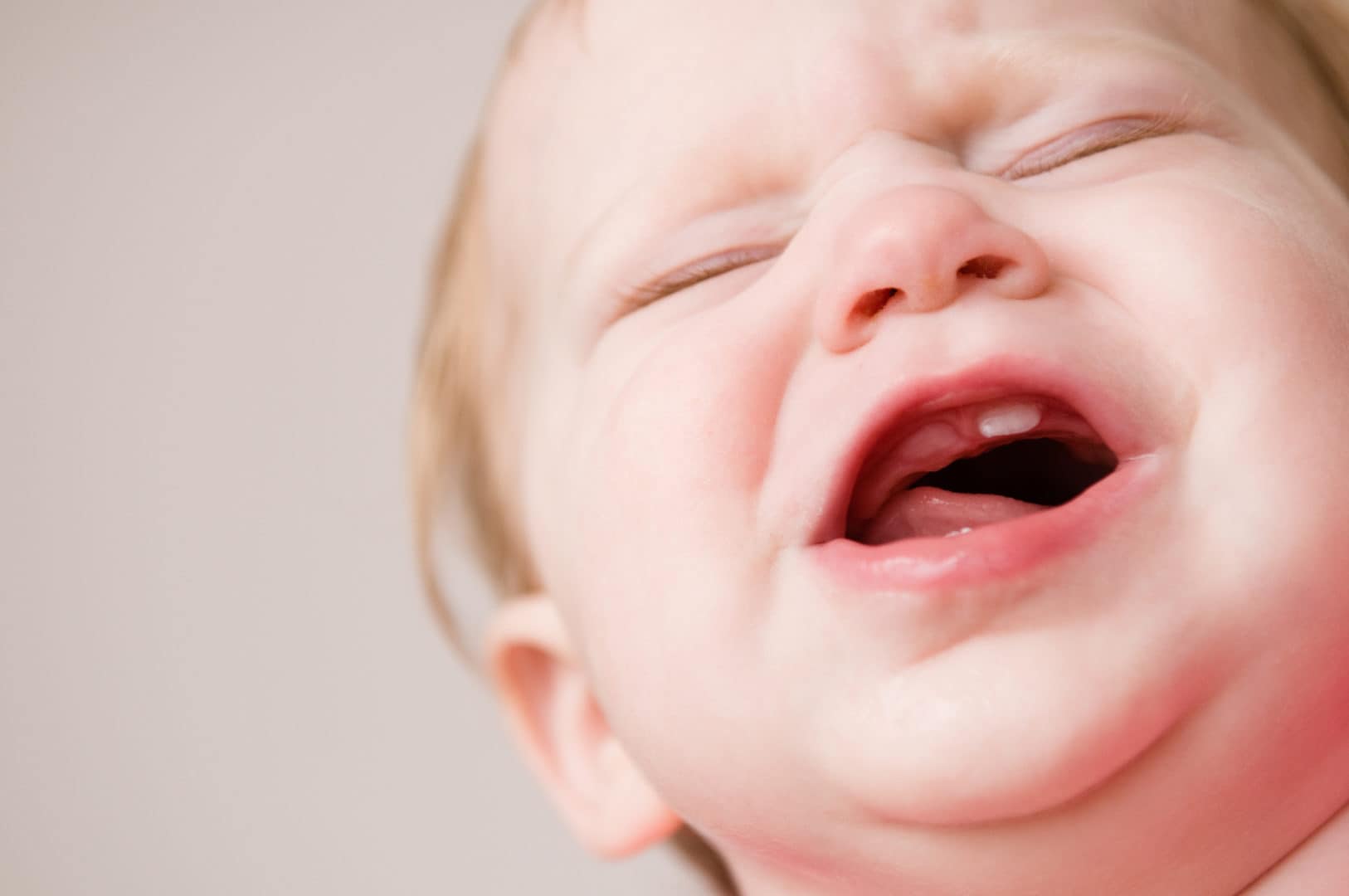It isn’t uncommon for parents to reach for the thermometer when their baby is fussy, cranky or generally seems off. But could teething be the culprit behind your baby’s fever? In the doctor-defined sense, no. But teething may cause a slight increase in your baby’s temperature.
“Infants around age 3 to 7 months may begin to develop symptoms related to teething, and a low-grade fever — which is below 100.4 degrees Fahrenheit — may be one of them,” says Dr. Sara Siddiqui, a pediatrician and clinical assistant professor in the Department of Pediatrics at NYU Langone’s Hassenfeld Children’s Hospital in New York. “However, anything above that [which is what doctors regard as a true fever that may warrant medical attention] generally isn’t due to teething.”
Wondering why your baby feels warm to the touch? Experts weigh in on what parents often refer to as “teething fever” and offer advice for making your little one comfortable during this often-challenging time.
Teething fever vs. true fever
Over time, the term “teething fever” has made its way into many parents’ vernacular, but ask a pediatrician and they’ll tell you: There’s no concrete connection between an actual fever and teething.
“Teething fever is a bit of a controversial subject, as it is a widely held belief by parents but has never been proven through studies,” says Dr. Scott Tomaine, a pediatrician at Children’s Hospital of Philadelphia. In the medical sense, a fever is defined as anything over 100.4 F for babies 3 months and under, and up to 102 F for babies 3 months and up.
All of this said, if your baby feels a little warmer than usual, their slight rise in body temperature may be associated with teething.
“As the teeth erupt through the gums, they can cause a very low-grade rise in body temperature, but it is very unlikely that it will cause an actual fever over 100.4 F,” Tomaine says.
What causes teething fever?
Anecdotally, a low-grade fever in conjunction with teething has been attributed to baby putting unclean hands in their mouth or the inflammation of the gums, but ultimately, there isn’t enough research-based evidence to suggest teething causes what pediatricians define as a true fever.
In a 2016 article published in Pediatrics, researchers used data from 10 different studies to determine that, while drooling, irritability and gum irritation were common during teething, a fever over 100.4 F was not. They also found that teething symptoms peaked during the eruption of the primary incisors or front teeth, which can happen between 6 months and 16 months of age.
How long does teething fever last?
A study in 2011 had dentists check on 47 babies every day for eight months to find that a slight increase in temperature often happened on the day a tooth erupted, as well as the day before. However, the babies’ temperatures never constituted what doctors would define as a true fever.
How to tell if it’s teething or something else
The reason pediatricians are adamant about there not being a connection between teething and a true fever is because they don’t want parents writing off an actual illness as something minor.
“It’s important parents know the signs of teething and are aware that low-grade teething fevers aren’t true fevers,” says Siddiqui. “Some parents mistake fevers above 101, extreme fussiness, diaper rash, diarrhea or difficulty sleeping as teething symptoms.”
Here are telltale teething signs, according to Siddiqui:
-
Drooling.
-
Mild fussiness.
-
Facial rash (also referred to as teething rash, which is a result of irritants and food in drool affecting skin).
-
The need to chew, which may result in infants using fingers (or toes) to rub on gums for relief.
Also, don’t dismiss your parental instincts. No one knows your baby like you do. If you know your child isn’t sick, but they’re not acting like themselves or they’re deviating from their normal routine, there’s a good chance they have a tooth coming in.
“I can always tell when one of my babies is teething because, seemingly out of nowhere, there’s an excess of drool,” says mom of three Jana Branson, of Maplewood, New Jersey. “Also, my middle son would often get fussy during the night — something he never did — with almost no other symptoms. That was the biggest indicator.”
If you’re not sure whether your baby’s fussiness or change in behavior is due to teething or not, here are symptoms not related to teething, according to Seattle Children’s Hospital:
-
Fever over 100.4 F for babies 3 months and under or 102 F for older babies.
-
Diarrhea.
-
Diaper rash.
-
Runny nose.
-
Excessive crying.
If your baby is showing any of the above signs, call their pediatrician to rule out any infections, which often start between 6 months to 12 months, due to the tendency for babies to put everything in their mouths.
How to break a teething fever
For parents wondering how to break a teething fever, it’s important to keep in mind that it’s not a true fever if it’s below 100.4F (and if it’s above 100.4 F, it likely isn’t from teething). So, before you reach for the Tylenol, Siddiqui and Tomaine recommend the following:
-
Rubbing a soft, cool washcloth on the gum area.
-
Having baby chew on teething rings.
-
Massaging the gum area with clean fingers.
If none of the above are providing relief or teething symptoms seem more severe than usual, acetaminophen can be used sparingly.
“Just be sure to ask your pediatrician about specific dosing guidelines, and if the fever is above 101 F, it’s best to have baby checked out by their doctor,” says Siddiqui. “The best plans for baby always come from parents and pediatricians working together.”






